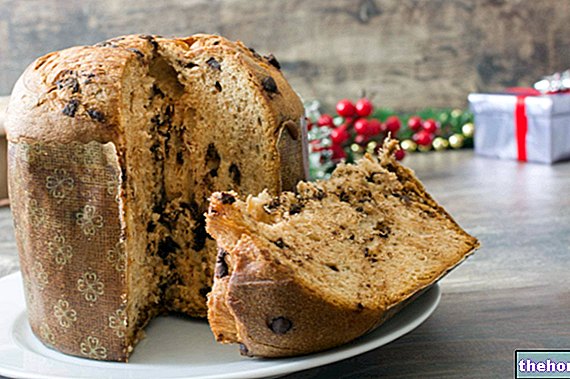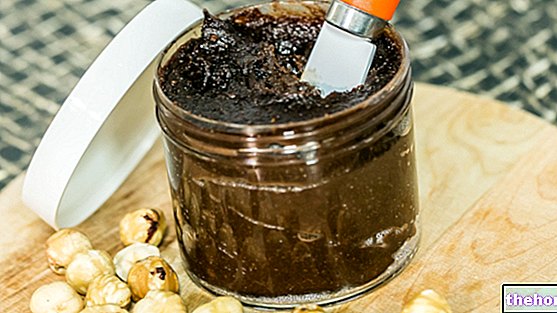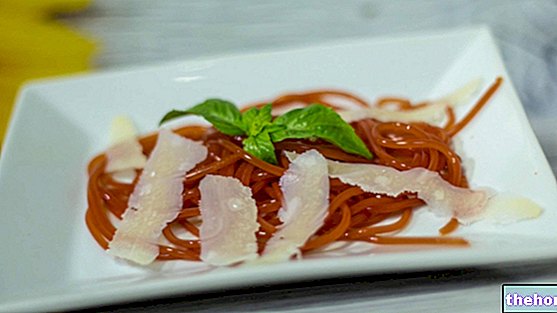Never take the taste of vegetables for granted: by skilfully combining some vegetables, you can create real explosions of flavors! And I would like to give you a demonstration by preparing a delicious vegetable ragout: we bet that pasta will be a triumph of taste? No more sad dishes: don't miss this fabulous all-vegetable ragù!
Video of the Recipe
Problems with playing the video? Reload the video from youtube.
Identity Card of the Recipe
- 45 KCal Calories per serving
-
Ingrediants
- 200 g of peppers
- Q.b. of pepper
- Q.b. of salt
- A few stalks of chives
- A few mint leaves
- A few basil leaves
- 1 sprig of parsley
- 200 g of zucchini
- 200 g of white asparagus
- 100 g of celery
- 200 g of peas
- 200 g of cherry tomatoes
- 200 g of eggplant
- 200 g of carrots
- 2 tablespoons of extra virgin olive oil
Materials Needed
- Chopping board
- Knife or mandolin
- Casserole with lid
- Vegetable peeler
Preparation
- Wash the aubergines, remove the stalk and cut them vertically into thin slices. Place a colander over a plate or bowl, then place the diced aubergines in a colander and sprinkle with salt as you go. Allow the aubergines to drain for an hour: to facilitate dripping, it is advisable to place a weight on top of the aubergines.
Why sprinkle the eggplant with salt?
Salt is useful for removing the vegetation water of aubergines: in this way, solanine, a potentially toxic glycoalkaloid, responsible for the typical bitter aftertaste of aubergines, is removed.- Meanwhile, clean the peppers, cut them in half, remove the stalk, seeds and internal filaments.
- Peel the carrots and cut them into cubes.
- Shell the peas.
- Clean the asparagus, partially peeling them and removing the hardest part of the stem. Cut the stems into cubes, leaving the tips whole.
- Clean the cherry tomatoes and cut them into small pieces. Wash the courgettes, remove the stalk and cut them into cubes.
- Wash the celery stalks, removing the hardest and most woody filaments. Cut the celery into chunks.
- Wash the aubergines to remove excess salt, then pat them with absorbent paper.
- Pour two tablespoons of extra virgin olive oil in a saucepan, then combine all the diced vegetables (peppers, carrots, aubergines, asparagus, tomatoes, celery) together with the peas, maintaining a high flame for a couple of minutes. When the vegetables are golden brown, cover with the lid and, maintaining a moderate flame, cook for about ten minutes. I take care to stir from time to time.
Did you know that
You can use other seasonal vegetables, or make an onion-based sauté before adding the other ingredients.
In this recipe we suggest cutting the vegetables into cubes, but it is possible to cut them into sticks (matches), for example grating carrots.
For a creamy sauce, we suggest using potatoes.- At the end of cooking, raise the heat to dry any excess liquid. Season with salt and pepper. Finish with chopped herbs (eg parsley, basil, chives, mint).
- The vegetable ragù is ready to be used as a side dish or condiment for baked pasta, risotto and lasagna. It can be kept in the fridge for 4 days or in the freezer for a couple of months.
Alice's comment - PersonalCooker
If you thought that the vegetables were too sad to be included in the formulation of your favorite recipes, we bet that with this "alternative to meat sauce you will change your mind? You can play with the vegetables, enriching the sauce with cauliflower, green beans, broad beans, Belgian salad, radicchio , cabbage or any other type of seasonal vegetables!
Don't miss the Seitan vegetable ragout recipe!
Nutritional values and Health Comment on the recipe
The Ragù di Verdure is a food that is part of the group of accompanying sauces for first courses.
It has a low energy intake, mainly provided by carbohydrates, followed by lipids and finally proteins.
Carbohydrates are mainly simple, monounsaturated fatty acids and peptides with a low biological value.
It does not contain cholesterol and the fibers are abundant.
The Vegetable Ragù is a recipe that lends itself to the diet against overweight and metabolic diseases.
It is not relevant to low-fiber diet therapy (against certain intestinal diseases). It is tolerated by the vegetarian and vegan philosophy.
It can be used in the diet against gluten and lactose intolerance.
The average portion depends on the quantity of the first course in question; it could be about 90-110g (40-50kcal).




























